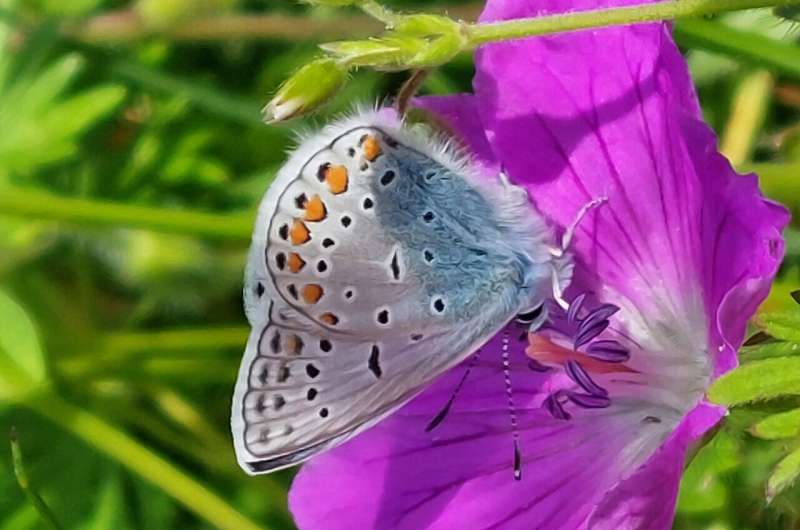This article has been reviewed according to Science X's editorial process and policies. Editors have highlighted the following attributes while ensuring the content's credibility:
fact-checked
peer-reviewed publication
trusted source
proofread
Human activities appear to drive insect declines in Europe

A review of 82 previously published studies of two major groups of insect species underscores reported declines in insect populations in Europe, and links these declines to human activities that influence insect habitats.
Quintana Rumohr of the Research Institute for Ecosystem Analysis and Assessment, Germany, and colleagues present these findings in the open-access journal PLOS ONE on August 23, 2023.
For many years, concerns about declining insect abundance and diversity have grown in several regions in Europe and North America. The trend is complex; for instance, after one species decreases, another might increase thanks to reduced competition. In addition, the drivers underlying observed declines are complex and varied between regions, leading to uncertainties about efforts to address them.
To help deepen understanding, Rumohr and colleagues conducted a review of 82 previously published studies that addressed the drivers of changes in various Central and Western European populations of two major groups of insects, Carabidae (ground beetles) and Lepidoptera (including moths and butterflies). Some of the studies focused on one or the other group and some on both. All studies included population monitoring data spanning at least six years and focused on agricultural landscapes, with most located in the UK, Germany, and the Netherlands.
Analysis of the trends reported in the 82 papers revealed both increases and declines in diversity and abundance within each of the two groups of insects. However, declines were more frequent, underscoring an overall declining trend for Central and Western Europe.
Further analysis of the information reported in the studies suggested that human activities are the primary drivers of observed changes—both increases and declines—in insect populations. Such activities include agricultural activities, nature conservation, urbanization, and climate change. Most of these drivers do not affect insects directly but instead influence their habitats.
These findings could help inform efforts to alter human activities in ways that reduce disruption to nature while still meeting human needs. The authors also note that their analysis reveals a need for future research to place a bigger focus on monitoring potential drivers of insect population changes alongside monitoring of population trends themselves.
The authors add, "Research into the root causes of insect decline is challenging, as it requires the understanding of processes that have been taking place years or even decades ago. In our study, we leveraged the wealth of published long-term data to gain insights into factors associated with the decline of insects in Europe."
More information: Drivers and pressures behind insect decline in Central and Western Europe based on long-term monitoring data, PLoS ONE (2023). DOI: 10.1371/journal.pone.0289565 journals.plos.org/plosone/arti … journal.pone.0289565
Journal information: PLoS ONE
Provided by Public Library of Science


















